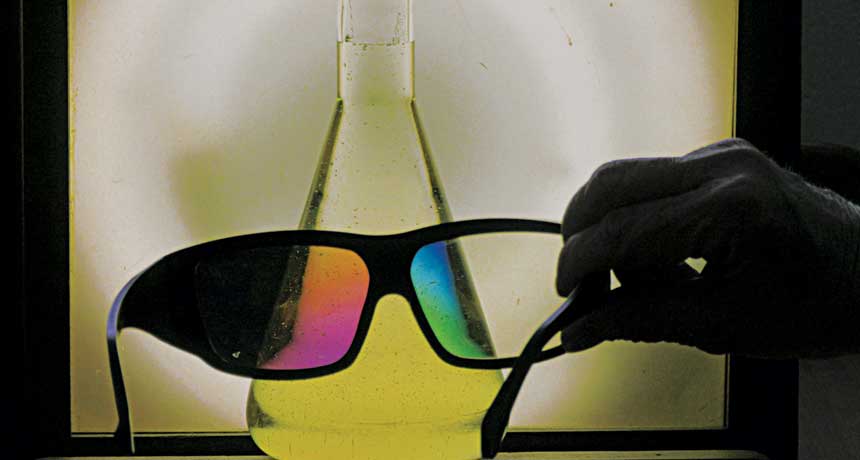The multiverse isn’t a hypothesis – it’s a prediction of our best theories of reality.



Success! This morning, SpaceX’s Dragon spacecraft launched from Cape Canaveral Air Force Station in Florida on a mission to deliver more than 5,500 pounds of scientific research, supplies and hardware to the crew aboard the International Space Station. Get the details: https://go.nasa.gov/2vLx99b

“If we don’t study the mistakes of the future, we’re doomed to repeat them the first time :(” — Ken M, comedian.
[Editor’s Note: Today’s blog post is an excerpt from Mr. Robert J. Hranek’s short story entitled “Angry Engineer,” submitted to the 2019 Mad Scientist Science Fiction Writing Contest. The underlying premise of this contest was that, following months of strained relations and covert hostility with its neighbor Otso, Donovia launched offensive combat operations against Otso on 17 March 2030. Donovia is a wealthy nation that is a near-peer strategic competitor of the United States. The U.S. is a close ally of Otso and is compelled to intervene due to treaty obligations and historical ties. Among the many future innovations addressed in his short story, Mr. Hranek includes a “pre-mortem” in the form of two dozen lessons learned, identifying potential “mistakes of the future” regarding the Battle for Otso, so that we’re not “doomed to repeat them the first time!” Enjoy!]
The U.S. responded to Donovia’s invasion of Otso by initiating combat operations against the aggressors on 1 April 2030 — April Fools’ Day. Thousands of combatants died on both sides, mostly on ships; hundreds more were wounded, primarily from the land battle, and an unverifiable number of casualties occurred worldwide due to the sabotage of power grids and other infrastructure. An accurate civilian count was impossible in the chaos of reestablishing power, computer, and financial systems worldwide.
will be premiering at Tribeca Film Festival in New York.
For the past two years, I have been involved with a documentary on the future of the brain. As announced today in Wired, I’m excited to share that the film, I AM HUMAN, will be premiering at Tribeca Film Festival today in New York! Here is a sneak peek.
The movie follows three people – a woman with Parkinson’s, a quadraplegic, and a blind man – and their journeys with implantable brain interfaces. The film is inspiring, invites fresh reflection on this unique historical moment, and promises to kickstart an important dialogue around our shared future.
Bruce Damer is a living legend and international man of mystery – specifically, the mystery of our cosmos, to which he’s devoted his life to exploring: the origins of life, simulating artificial life in computers, deriving amazing new plans for asteroid mining, and cultivating his ability to receive scientific inspiration from “endotripping” (in which he stimulates his brain’s own release of psychoactive compounds known to increase functional connectivity between brain regions). He’s about to work with Google to adapt his origins of life research to simulated models of the increasingly exciting hot springs origin hypothesis he’s been working on with Dave Deamer of UC Santa Cruz for the last several years. And he’s been traveling around the world experimenting with thermal pools, getting extremely close to actually creating new living systems in situ as evidence of their model. Not to mention his talks with numerous national and private space agencies to take the S.H.E.P.H.E.R.D. asteroid mining scheme into space to kickstart the division and reproduction of our biosphere among/between the stars…




The US Defense Advanced Research Projects Agency (DARPA) is eyeing flight tests later this year for two hypersonic weapons, and it is teaming up with the US Army on developing such a ground-launched capability. However, at the same time, army leaders are drafting plans to consolidate duelling lines of effort within their hypersonic weapons’ portfolio.
During a 1 May Defense Writers’ Group breakfast with reporters, DARPA Director Dr Steven Walker fielded questions about ongoing projects inside the Pentagon’s research arm including the development of two hypersonic weapons with the US Air Force (USAF) — the Tactical Boost Glide (TBG) and the Hypersonic Air-breathing Weapon Concept (HAWC).
“[They are] two very different concepts but when you’re talking hypersonic [weapons], it is good to have what I consider intended redundancy because it’s a hard technology, making materials and propulsion systems that last in 3,000° Fahrenheit temperatures is not easy,” Walker said.